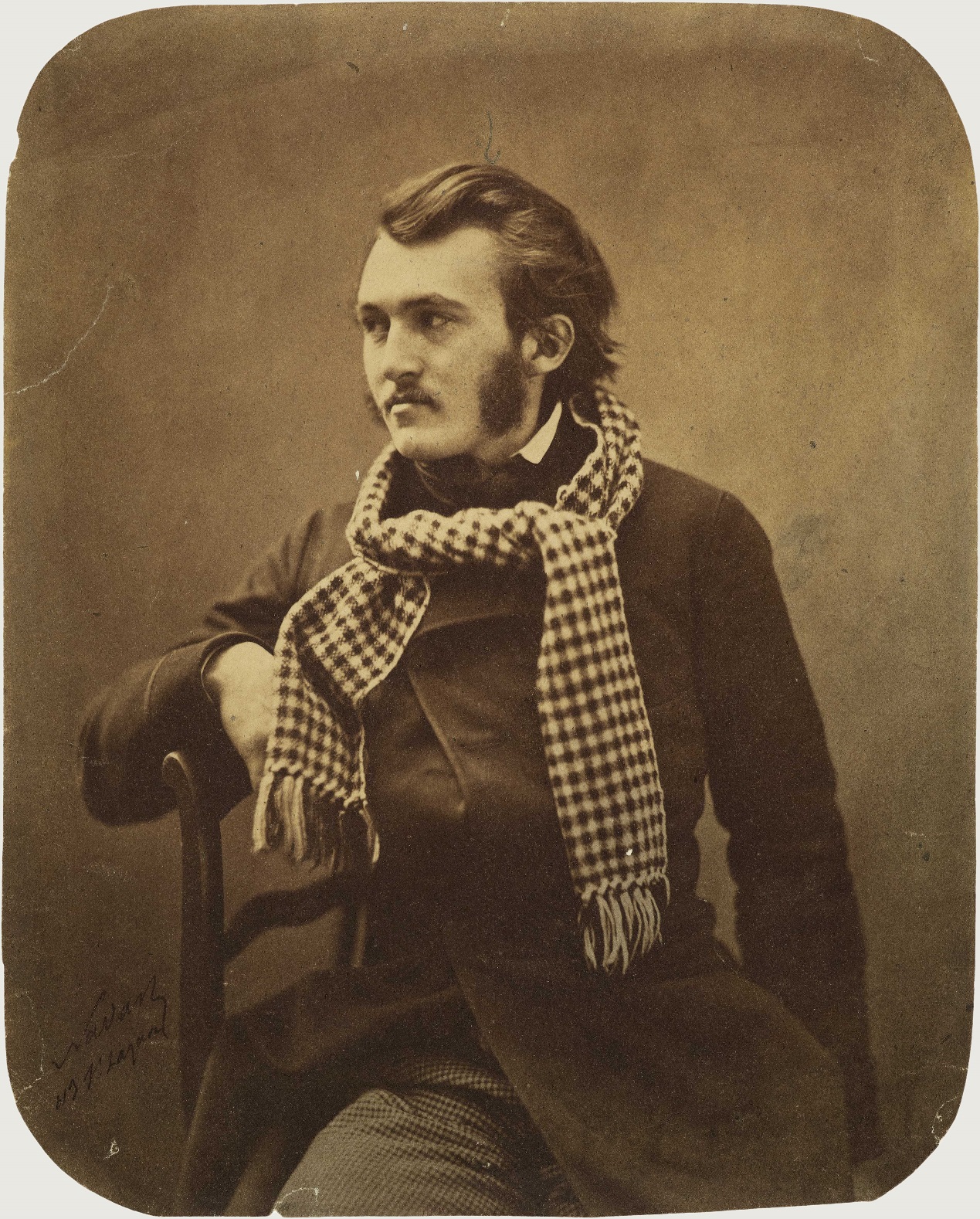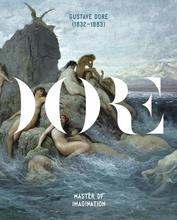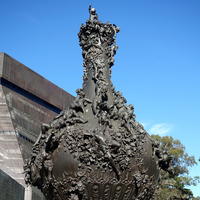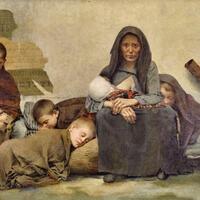More about Gustave Doré
- All
- Info
- Shop
Works by Gustave Doré

Contributor
Gustave Doré classed up the classics, brought the Bible to life and changed how people pictured the afterlife. Yeah, whatever, sellout.
Dante. Milton. Byron. Cervantes. They're all literary giants, yes, but there's one other thing they all have in common: extravagant and definitive editions of their work published with etched illustrations by Gustave Doré. There was no contract too daunting, no subject too great for our Gus to put knife to wood for the purpose of depicting. Even God Himself had an edition of his most popular Book illuminated with illustrations by Doré, and the resulting Grande Bible de Tours was so immensely popular that critics insisted the artist could “with the smallest fragment, the faintest pieces of evidence...[reconstruct]...collapsed temples fallen to dust, not through thankless archaic work, but through a powerful and rapid vision.” People liked him, is what we're saying.
Known primarily in his time as a prolific illustrator and printmaker, Gustave Doré began his career at the age of fifteen as a caricaturist for the French paper Le Journal pour rire, producing work which was presumably just as hilarious as one would expect from a teenaged political cartoonist obsessed with religious iconography. That early work, along with the several volumes of lithographs he put out shortly afterward, got him enough good press that he was able to score some lucrative illustration jobs, and it wasn't long before the sweet, sweet Rabelais and Balzac commissions started rolling in.
Doré remained extremely prolific throughout his life—he produced 241 illustrations for the Bible alone—and by his mid-40s he'd been made both a Chevalier and an Officier of the Legion of Honor (like being made a knight, but French-er). Popular as he was in his native France, he was positively beloved in London, where the Doré Gallery was established in 1861—despite the fact that the artist himself neither lived there for any length of time nor spoke any English. After signing a five-year contract with the English publisher Grant & Co. Doré was compelled to spend three months a year in London, which culminated in London: A Pilgrimage, his illustrated travelogue of the city. (Despite great commercial success, a lot of the higher-ups in the city didn't like how much his pictures seemed to focus on images of squalor and poverty in London. What the actual squalid poor people thought about the book is less clear, as nobody seems to have bothered to ask them.)
Perhaps Doré's most lasting legacy came about because of his illustrations for Dante's Inferno, in which he provided a picture of hell so distinct and vivid that some critics felt he must have received a divine vision. Initially unable to find a backer for such an ambitious project, Doré had to fund the first volume (the Inferno) himself; it was so successful that publisher Hachette financed and put out the subsequent two parts in a single volume immediately, and his illustrations were eventually published in nearly 200 different editions accompanied by translations into numerous languages. Which just goes to show you that the one thing people fear more than hell is that they might miss out on something cool.
In Doré's time there was considerable debate over whether his work should be considered art or simply illustration. He was self-taught and his work isn't easily classified as part of any particular movement, so he was often dismissed as talented but ultimately without merit, and while he produced numerous paintings and sculptures in addition to his etchings (there's evidence that he thought of himself primarily as a painter and saw printmaking as a lucrative side-line) he didn't receive nearly as much attention for them, leading to criticism that he was essentially a failed artist who sold out and went corporate. But hey, this is an art website, and since Doré's on here and we're all pretty cool with the guy it looks like we've settled that debate for good and all. You're welcome, Gustave.
Featured Content
Here is what Wikipedia says about Gustave Doré
Paul Gustave Louis Christophe Doré (
UK: /ˈdɔːreɪ/ DOR-ay,
US: /dɔːˈreɪ/ dor-AY;
French: [ɡystav dɔʁe]; 6 January 1832 – 23 January 1883) was a French printmaker, illustrator, painter, comics artist, caricaturist, and sculptor. He is best known for his prolific output of wood-engravings illustrating classic literature, especially those for the Vulgate Bible and Dante's Divine Comedy. These achieved great international success, and he became renowned for printmaking, although his role was normally as the designer only; at the height of his career some 40 block-cutters were employed to cut his drawings onto the wooden printing blocks, usually also signing the image.
He created over 10,000 illustrations, the most important of which were copied using an electrotype process using cylinder presses, allowing very large print runs to be published simultaneously in many countries.
Although Doré's work was popular with the general public during his life, it was met with mixed reviews from contemporary art critics. His work has been more widely celebrated in the centuries following his death. Among his admirers were writers H. P. Lovecraft and Théophile Gautier.
Check out the full Wikipedia article about Gustave Doré














